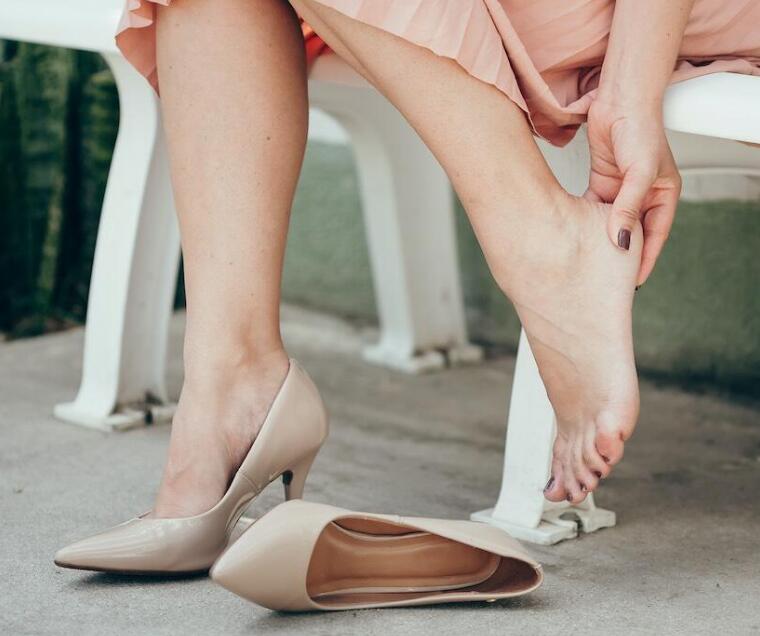What a Podiatrist Wants You To Know About Heel Height on Boots, Mules, and Sandals for Every Type of Foot
If you’re someone who strictly wears flats for the sake of your feet, you may be surprised to learn that a bit of a heel is better than none at all, according to podiatrist and podiatric surgeon Dana Canuso, DPM, founder of Dr. Canuso Skincare for Feet. “This is by far the most common misconception, that flat shoes are good for you and responsible, but long term, the lack of support can cause significant damage to your feet, knees, hips, back and shoulders,” she says.
That doesn’t mean you have to strap on a sky high stiletto, though, (which FYI, Dr. Canuso does not recommend wearing because they can increase your risk of ankle injuries). There are lots of good options in between.
When it comes to finding heels that won’t hurt your feet, it’s important to keep a few things in mind, like the podiatrist heel height recommendations below.
Opt for a medium-height heel
Picking the right pairs of heels feels kind of like Goldilocks—you don’t want anything too low or too high. It needs to be just right because it can affect your posture and walking pattern. “Too small a heel often can lead to foot pain, bunions, back pain, and plantar fasciitis (or inflammation of the foot), and too high a heel may often lead to bunions and back pain, as well as achilles tendon problems,” says Dr. Canuso. So opt for a heel that’s two to three inches high and see how your feet feel since the ideal heel height will vary by person.
“My personal feeling is that any heel over three inches should only be worn for a very short period of time, like let’s say for a special occasion or a wedding, as wearing them for extended periods can cause long-term damage, especially if worn all day, every day,” she says.
Be sure it has a back
Slip-on sandals and mules can seem really enticing, especially come spring and summer. But if you’re primary concern is foot health—not fashion—you’ll want to stick with heels that have backs. “Overall, having a back on heels will offer more support than shoes that do not,” Dr. Canuso says.
The size of the back part of the shoe matters, too. “It’s common for some people to have a bony prominence on the back of their heel, which could rub on a shoe back,” Dr. Canuso explains, “so make sure that the shoe either hits above or below that point to prevent rubbing and pain.”
Consider wedges
If Dr. Canuso had to pick one MVP when it comes to heel, it would have to be the wedge. “In my opinion, they’re the best and most supportive heel for any foot type, as it helps distribute pressure while walking, supports the ankle, and gives a greater surface area for the foot to find stability when you’re standing and walking,” she says, adding that if your wedge is shorter (like 1.5 inches), it’s fine for it to be open back since you’re so low to the ground it’ll be stable enough without the extra support.
Find a supportive base
It’s important to note that the thickness in heels—whether being a block or wedge or instead thinner, or stiletto—may be more or less favorable based on foot arch. “If I had to choose between a short thin stiletto or a high wedge as being a better heel option for avoiding pain and discomfort, my answer would change based on foot type,” says Dr. Canuso.
According to her, a medium-height wedge is best for low-arch or flat feet, as well as neutral feet; yet, a short stiletto (1.5 inches) should be fine for high-arched feet. “As a general rule of thumb, I would say a 2-3 inch wedge with a leather comfortable back is the best heel [for anyone] to wear daily,” she says.
Bottomline
Having a bit of a feel is better than no heel at all when it comes to foot health, but you want to be sure that you’re sticking with medium height options that are between 2–3 inches tall for max stability. For similar reasons, go with shoes that have backs, and wear wedges if you plan to be in heels for long periods of time, though stilettos are fine for special occasions like a wedding.
Oh hi! You look like someone who loves free workouts, discounts for cutting-edge wellness brands, and exclusive Well+Good content. Sign up for Well+, our online community of wellness insiders, and unlock your rewards instantly.
